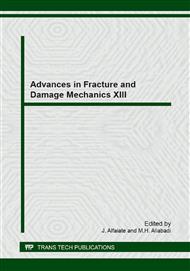p.317
p.321
p.325
p.329
p.333
p.337
p.341
p.345
p.349
Comparative Study on the Fatigue Behaviour of SCC and VC
Abstract:
Continuous cyclic loading on concrete constructions involves a progressive cracking mechanism, leading to significant changes of the material properties during the lifetime of the structure. Gradually, irreversible damage is inflicted and the carrying capacity is affected, which may cause structural collapse at a stress or strain level much lower than in case of a single static load. This so-called fatigue phenomenon is well-documented in literature for traditional, vibrated concrete (VC), but this is not the case for self-compacting concrete (SCC). Given the fact that this latter concrete type is already used worldwide in many types of structures, including cyclically loaded ones, a good knowledge and understanding of the static and fatigue material behaviour is crucial. Up till now, it is unsure whether SCC performs better, worse, or equally under fatigue loading conditions. Therefore, in this study, destructive four-point bending tests are performed on large beams, made from VC and SCC, both statically and cyclically (at different loading rates). A comparison of the deflection, strain, crack pattern and crack width evolution of the different concrete types is made. The results reveal some significant differences regarding concrete strain and crack width development during the cyclic tests.
Info:
Periodical:
Pages:
333-336
Citation:
Online since:
September 2014
Authors:
Price:
Сopyright:
© 2015 Trans Tech Publications Ltd. All Rights Reserved
Share:
Citation:


